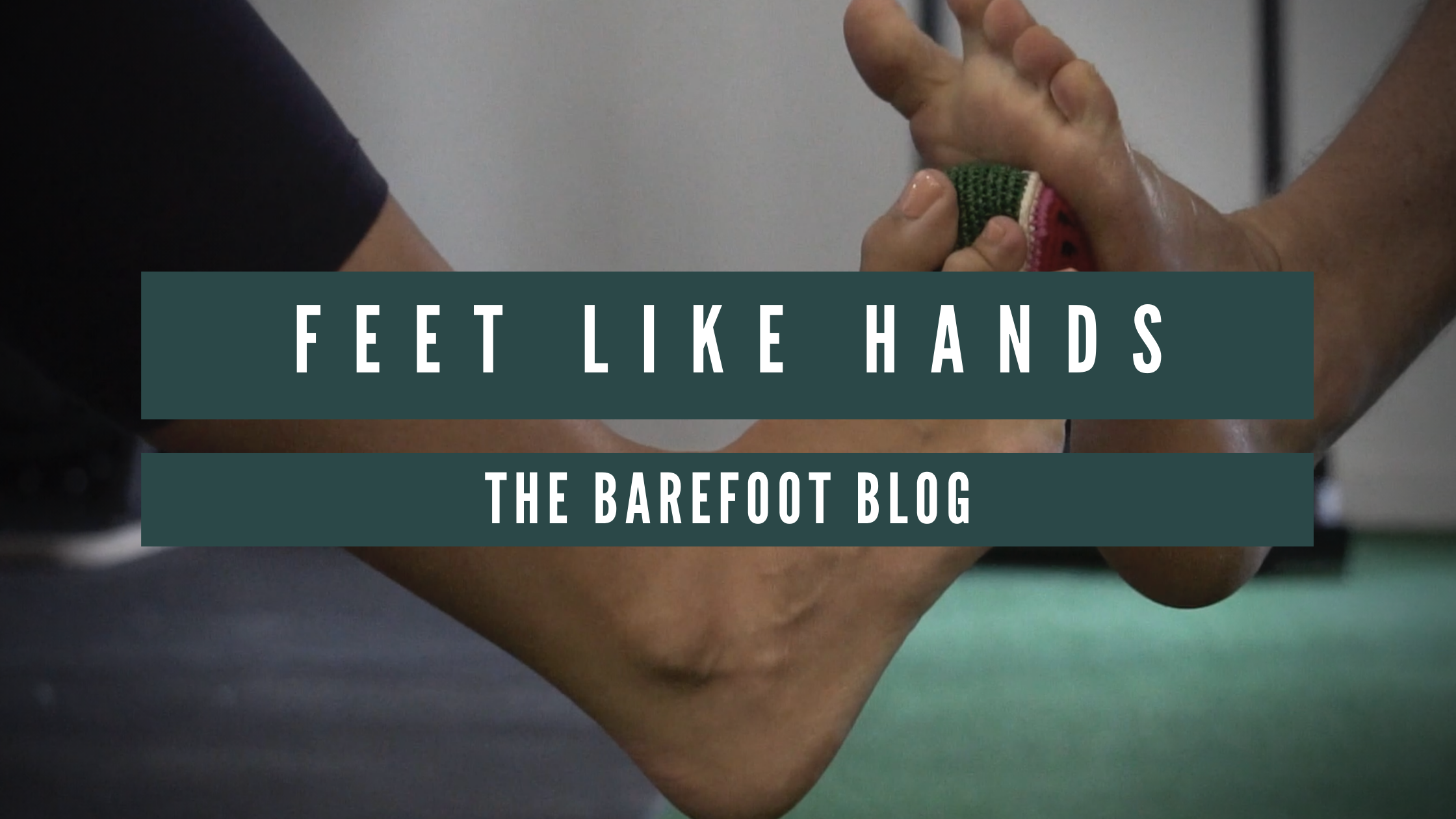Feet Like Hands

During Jiu-jitsu training, my coach O’Dell will often say ‘feet like hands’ when teaching a technique that involves using the feet to hook/grip the other person - essentially utilising the dexterity of the feet to give you an advantage against the other person. This has really stuck with me, as the concept has far reaching implications for the feet (and hands) beyond just Jiu-jitsu.
When you think about our evolutionary history and the structure and function of our closest relatives (bonobos and chimps), feet are really just like hands that have adapted to walking bipedally across ground, rather than climbing/hanging/swinging in trees. This bipedal locomotion was actually a very important adaptation that gave us a survival advantage, so the feet are quite clearly a very important foundation for our movement. But if this is the only way you view their function, you are missing a massive spectrum of the movement potential in the feet.
When you progressively train the coordination, dexterity and mobility of the feet with plenty of different activities, you create more useful and more playful feet. Feet that can intelligently interact with the environment and facilitate fun experiences. A happy side-effect of this is that the feet become stronger and more resilient to pain/injuries, meaning you can walk/run on them for longer (which is pretty damn important).
Our modern lifestyle and cultural obsession with footwear (especially oddly shaped footwear) has severely damaged our connection with our feet. Hands are seen as these beautiful, elegant tools that we need for almost everything we do, while feet are tucked away in tight/rigid casts most of the day with very little activity. We would never force our hands into tiny mittens all day and expect them to feel good or perform well and yet that is exactly what many people do to their feet each and every day. We need to value and prioritise the health of our feet just as much as our hands!
Fortunately there are many fun and accessible ways to do this - natural movements, martial arts, hacky sack, dancing, surfing, climbing and balance beam work to name a few. Basically anything that gets your foot-brain connection firing hard! The most important part of the equation is to always aim to be working/playing in the Goldilocks Zone - not too easy, not too hard, just right. This will keep you coming back for more as the brain thrives on this kind of flow-inducing activity and gets hooked on it’s own feel-good chemicals.
A big part of TFC’s mission is to help as many people as possible find this Goldilocks Zone in their life - whether that is in rehab, prehab or play, we can all benefit greatly from some inspiration and guidance along the way. We will provide examples of basic, intermediate and advanced mobility and control work for the feet. These will be continually added to over time to make sure you always have an appropriate progression or regression to work on or play with.
Leave a comment